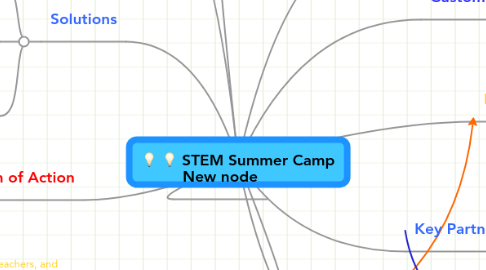STEM Summer Camp
af Nathaniel Coghlan


1. Goals
1.1. Help correct educational inequality
1.2. Provide STEM education to students underrepresented in the fields.
1.3. Provide the US with the next generation of scientists, engineers, and innovators
2. Challenges
2.1. Attracting college student with STEM majors
2.2. Generating revenue from donors
2.3. Creating the "camp grounds" in urban and metro areas where the infrastructure/material are not present
2.3.1. New node
